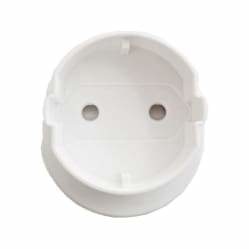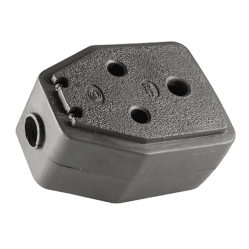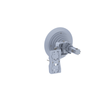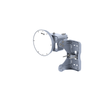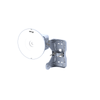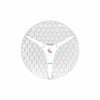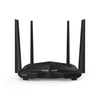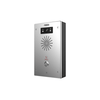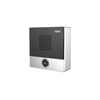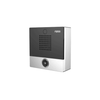Power Solutions - Electrical
The Best Electrical Cables
The cable that is used for the transmission and distribution of electrical power is known as the electrical power cable. It is used for the transmission of high voltages in places where overhead lines are impractical to use.
The power cable is made of three main components, namely, conductor, dielectric, and sheath. The conducting path for the current in the cable is provided by the conductor. The insulation or dielectric withstands the service voltage and isolates the live conductor with other objects. The sheath does not allow the moistures to enter and protects the cables from all external influences like chemical or electrochemical attack and fire.
Types of Electrical Cable
Various types of Cables are used everywhere for various applications. Not all cables perform the same application. The function of a cable depends upon the type of cable. The electrical cables are made of aluminium or copper wires protected by an insulating coating which can be made of synthetic polymers.
Cables are classified into 5 types depending upon their purpose as follows:
- Ribbon Electric Cables
It consists of multiple insulated wires running parallel with one another and are used for transmission of multiple data simultaneously. For example, this is used to connect the CPU with the motherboard and are generally used for interconnection of networking devices.
- Shielded Cables
It consists of 1 or 2 insulated wires which are covered by a woven braided shield or aluminium Mylar foil for better signal transmission and removing irregularities in the frequency of power and external interference in radio. These cables transmit high voltage electric current and are protected by a shield.
- Twisted Pair Cables
It has two or more insulated copper wires which are twisted with each other and are colour coded. These types of wires are usually used in telephone cables and the resistance to external interference can be measured by the number of wires.
- Coaxial Cables
This consists of solid copper or steel conductor plated with copper which is enclosed in the metallic braid and metallic tape. This is entirely covered with an insulated protective outer jacket. These types of cables are used for computer networking and audio-video networking.
- Fibre Optics Cable
There are these types of cables which transport optical data signals from an attached light source to the receiving device. We are pretty much aware of what is optical fibre and its uses in a wide variety of applications.
What is electrical cable made of?
Electrical conductors are made up of metals such as, copper, aluminium, etc. These metals are used to make wires. Most wires are made out of copper because it conducts electricity with high flexibility and very little resistance.
What is the difference between wire and cable?
The basic key difference between wires and cables is that a wire is a single conductor whereas a cable is a group of conductors. Although, these conductors are made of a common material- copper or aluminium. Usually, the wires are bare and are twisted. But, some of the wires are coated with thin PVC layer.
Why are electrical wires covered in plastic?
Most electrical wire is covered in a rubber or plastic coating called insulation. ... The purpose of insulation covering the metal part of an electrical wire is to prevent accidental contact with other conductors of electricity, which might result in an unintentional electric current through those other conductors.
How do you identify electrical wires?
Here's a rundown of electrical wires:
- The black wire is the "hot" wire, which carries the electricity from the breaker panel into the switch or light source.
- The white wire is the "neutral" wire, which takes any unused electricity and current and sends them back to the breaker panel.
What is a common electrical wire?
Generally, a neutral wire is in an electrical system of a building and is tied the ground wire at the transformer. A common wire is a more general term and simply refers to the 0 Volt wire of a circuit, either electrical or electronic
Outer Sheath Colour Coding
The color of a cable’s outer sheath tells you the gauge of the wire inside the sheath as well as the amperage rating for the circuit.
Gray= Underground cable. Since all UF (underground feeder) cable is gray, check the sheath labeling for gauge and circuit specifics.
Black= 8- or 6-gauge wire, 45- or 60-amp circuits. Check sheath labeling for gauge and circuit specifics.
White= 14-gauge wire, 15-amp circuit
Yellow= 12-gauge wire, 20-amp circuit
Orange= 10-gauge wire, 30-amp circuit
Electrical Wire Color Coding
This code is standard for all conductors. The colors you’re most likely to find in your home are the following:
Black (or Red) = HOT. Hot wires carry current from the panel to the device, which could be a switch, receptacle, light fixture or appliance. There are other colors for hot wires, but they’re much less common.
White = NEUTRAL. Neutral wires carry the current back to the panel, completing the circuit.
Bare (or Green) = GROUND. In the event of a ground fault, the ground wire provides a path for the fault current to return to the panel, opening the breaker or blowing the fuse, cutting off the flow of electricity.
CABTYRE
CABTYRE cable is used to supply mains power to all types of electrical, domestic and industrial appliances and equipment such as refrigerators, washing machines, glass cutters, hand tools, polishers, kitchen appliances, woodworking equipment/machinery, hobby and garden tools, extension leads etc.
Sizes of Cabtyre
- 5mm x 4 core CabtyreBlack (Coil) 100m. ...
- CabtyreWhite 1.5mm x 3 core 100-meter coil. ...
- 5mm x 3 core CabtyreBlack 100-meter coil. ...
- CabtyreBlack 2.5mm x 3 core 100-meter coil. ...
- 5mm x 4 core CabtyreBlack (Coil) 100m. ...
- CabtyreWhite 2.5mm x 3 core 100-meter coil. ...
- CabtyreWhite 0.75mm x 2 core 100-meter coil.
Earth Rod
A rod that is driven into the ground to provide electrical connection to the ground to carry current safely away from a circuit in the event of an electrical surge. A ground rod generally is solid copper, although it may be a copper clad metal rod or pipe, or a galvanized iron rod or pipe.
What are earth rods used for?
Earthing Rods are specially designed rods using metals and alloys to conduct fault current arising out of electrical systems or lightning. They are made of variety of metals & bi metals. Usually Copper Rods are used for earthing.
How does an earth rod work?
How does grounding work? The principle of grounding is simple: it diverts an electric current which might escape from a device to a metallic conductor (cable) that ends with a stake (rod) buried in the ground.
What is an earth rod made of?
Ground rods are generally made of highly conductive/low resistance material such as steel or copper.
How deep should earth rods be?
Because a ground rod is so long, it can be hard to get leverage on the top of it when you start installing it. To get the top down to a more manageable level, dig a hole 2–4 feet (0.61–1.22 m) deep.
House Wire
What type of electrical wire is used for residential?
The most common sizes you'll find in residential work are 14-gauge and 12-gauge. Larger appliances such as electric stoves, electric water heaters, electric dryers and central air units will often use 10-, 8- or even 6-gauge wire. If you're adding an outlet, you need to use wire the same gauge as the existing wiring.
Surfix Cable
What is Surfix cable?
SURFIX cable is used for direct installations without further protection on walls, in roofs, floors and under plaster in houses and offices. ... SURFIX cable is manufactured to SABS 1507 and is approved by municipalities and other major utility companies. It is also used by electrical contractors and electricians.
Can Surfix cable be buried?
You can bury flat T/E and surfix cable in the ground as long as you adhere to the conditions thereof. and 6.4. 4.2. If less than half a meter 0.5m the unarmored cables should be in conduit, otherwise mechanically protected, or protected by an earth leakage device.
Norse Cable
What is Norse 2 cable?
Like Leif cables, the Norse 2 family uses silver-plated, OFC solid core conductors, extruded FEP insulation and a mechanically tuned construction. ... In addition, Norse 2 family cables are the first to use asymmetrical grounding across the board, lowering the noise floor by increasing the ground quality.
What cable do you use to wire a house?
The type of cable that is used for indoor domestic wiring is known as twin core & earth, this comprises of three wires, two of which are covered with a coloured insulating material and the earth wire (often called the CPC or central protective conductor) which runs between the two insulated wires.
What depth should electric cables be buried?
18-inches
The National Electric Code (NEC) sets the required burial depth of electric wire in rigid, non-metallic conduit, such as PVC, at 18-inches. Cable in any conduit, including PVC, that is buried at this depth is not in danger of being severed or disturbed by normal digging.
Should electric cables be in conduit?
That fact that you can see the cable is evidence that the cables are inadequately mechanically protected. All cables should either be contained in steel conduit or protected by 30mA RCD. If these two cannot be met, then the cables should be installed at least 50mm (2") from the surface.
Twin and Earth Cable
Twin and earth cable comprises two individually insulated current carrying conductors and an uninsulated circuit protective conductor. Twin and Earth cable is the most common cable used for domestic wiring today. The sheath is either grey (PVC) or white for low smoke cables (OHLS).
What Is Twin and Earth Cable Used For Professionally?
If you have ever heard of twin and earth cable for sale you may not know what it is used for. It is a unique form of cable, containing three different conductors. Twin and earth cable is also referred to as general fixed wiring. It is also a lighting cable. The cables inside will have annealed copper on the inside, PVC, insulation on the outside. And there will also be a circuit protective conductor. All of this comes in what looks like a flat cable, but it is relatively thick. The two different conductors inside are carrying the current. The bare wire is also part of the process. When you are hooking up different appliances at home, ones that are rated for voltage up to 500 V, this is what you will use.
Where Are Twin & Earth Cables Most Useful?
These types of cables are very useful when you are hooking up emergency lighting systems or switched light circuits. If you have highly technical smoke alarms, or if you are using a central heating thermostat, this is the cable that will work the best. You may have a job that requires you to install all of this, or you may be doing repairs. Either way, you need to have a large amount if you have multiple jobs coming up
The twin and earth cable that you order today will be here shortly. If your research went well, you will have found one of the top manufacturers. Whether you are doing installations for lighting, or if you are hooking up timers or thermostats, you will need plenty of this to complete every job. Once you have used a couple of times, you will know exactly how to hook up these systems using this unique semi flat cable.





